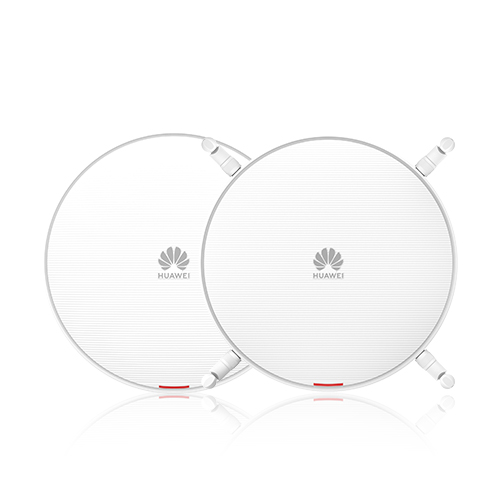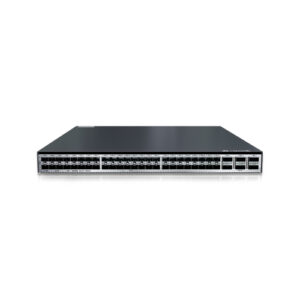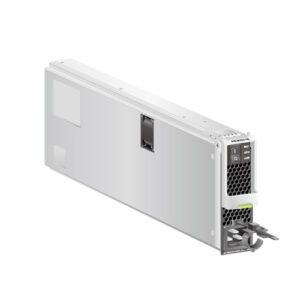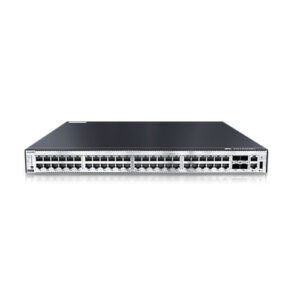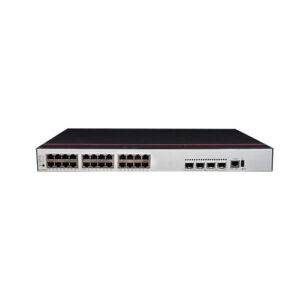Description
Feature Descriptions
Wi-Fi 6 (802.11ax) standards
As the latest generation Wi-Fi standards of IEEE 802.11, 802.11ax improves user experience in high-density access scenarios and supports 2.4 GHz and 5 GHz frequency bands.
MU-MIMO on both the 2.4 GHz and 5 GHz frequency bands, allowing an AP to transmit data to and receive data from multiple STAs simultaneously and multiplying the utilization of radio spectrum resources.
1024QAM modulation, improving data transmission efficiency by 25% compared with 802.11ac (256QAM).
OFDMA scheduling enables multiple users to receive and send information at the same time, reducing latency and improving network efficiency.
Spatial reuse (SR) technology uses basic service set (BSS) coloring to enable APs and STAs to distinguish BSSs, minimizing co-channel interference.
MU-MIMO
MU-MIMO technology enables an AP to send data to multiple STAs simultaneously, which doubles the radio spectrum resource usage, increases the number of access users and bandwidth, and improves user experience in high-density access scenarios.
Smart antenna array technology
The AirEngine 6761-21 equipped with the dual-band multi-scenario smart antenna array and intelligent switchover algorithm can intelligently detect the application environment and access density, adapts to common office and high-density access scenarios, achieving more accurate signal coverage and interference suppression. This design helps provide the optimal signal coverage direction and signal quality for each mobile access STA, bringing seamless and smooth wireless network access experience to the users.
High-speed access
New Wi-Fi 6 technologies such as 1024QAM modulation, more subcarriers, and more efficient Symbol scheduling enable the
2.4 GHz radio rate to reach 1.15 Gbit/s, the 5 GHz radio rate to reach 2.4 Gbit/s, and the device rate to reach 3.55 Gbit/s.
High Density Boost technology
Huawei uses the following technologies to address challenges in high-density scenarios, including access problems, data congestion, and poor roaming experience:
SmartRadio for air interface optimization
Load balancing during smart roaming: The load balancing algorithm can work during smart roaming for load balancing detection among APs on the network after STA roaming to adjust the STA load on each AP, improving network stability.
Intelligent DFA technology: The dynamic frequency assignment (DFA) algorithm is used to automatically detect adjacent- channel and co-channel interference, and identify any 2.4 GHz redundant radio. Through automatic inter-AP negotiation, the redundant radio is automatically switched to another mode (dual-5G AP models support 2.4G-to-5G switchover) or is disabled to reduce 2.4 GHz co-channel interference and increase the system capacity.
Intelligent conflict optimization technology: The dynamic enhanced distributed channel access (EDCA) and airtime scheduling algorithms are used to schedule the channel occupation time and service priority of each user. This ensures that each user is assigned relatively equal time for using channel resources and user services are scheduled in an orderly manner, improving service processing efficiency and user experience.
Air interface performance optimization
In high-density scenarios where many users access the network, increased number of low-rate STAs consumes more resources on the air interface, reduces the AP capacity, and lowers user experience. Therefore, Huawei APs will check the signal strength of STAs during access and rejects access from weak-signal STAs. At the same time, the APs monitor the rate of online STAs in real time and forcibly disconnect low-rate STAs so that the STAs can reassociate with APs that have stronger signals. The terminal access control technology can increase air interface use efficiency and allow access from more users.
5GHz-prior access (band steering)
The APs support both 2.4G and 5G frequency bands. The 5GHz-prior access function enables an AP to steer STAs to the
5 GHz frequency band first, which reduces load and interference on the 2.4 GHz frequency band, improving the user experience.
Wired and wireless dual security guarantee
To ensure data security, Huawei APs integrate wired and wireless security measures and provide comprehensive security protection.
Authentication and encryption for wireless access
The APs support WEP, WPA/WPA2-PSK, WPA3-SAE, WPA/WPA2-PPSK, WPA/WPA2/WPA3-802.1x, and WAPI authentication/encryption modes to ensure security of the wireless network. The authentication mechanism is used to authenticate user identities so that only authorized users can access network resources. The encryption mechanism is used to encrypt data transmitted over wireless links to ensure that the data can only be received and parsed by expected users.
Analysis on non-Wi-Fi interference sources
Huawei APs can analyze the spectrum of non-Wi-Fi interference sources and identify them, including baby monitors, Bluetooth devices, digital cordless phones (at 2.4 GHz frequency band only), wireless audio transmitters (at both the 2.4 GHz and 5 GHz frequency bands), wireless game controllers, and microwave ovens. Coupled with Huawei NCE-Campus, the precise locations of the interference sources can be detected, and the spectrum of them displayed, enabling the administrator to remove the interference in a timely manner.
Rogue device monitoring
Huawei APs support WIDS/WIPS, and can monitor, identify, defend, counter, and perform refined management on the rogue devices, to provide security guarantees for air interface environment and wireless data transmission.
Wired access authentication and encryption for the AP
The AP access control ensures validity of APs. The CAPWAP link protection, DTLS/IPsec encryption and hardware encryption provide security assurance, improving data transmission security between the AP and the AC.
Automatic radio calibration
utomatic radio calibration allows an AP to collect signal strength and channel parameters of surrounding APs and generate AP topology according to the collected data. Based on interference from authorized APs, rogue APs, and no Wi-Fi interference sources, each AP automatically adjusts its transmit power and working channel to make the network operate at the optimal performance. In this way, network reliability and user experience are improved.
Automatic application identification
Huawei APs support smart application control technology and can implement visualized control on Layer 4 to Layer 7 applications.
Traffic identification
Coupled with Huawei WLAN ACs, the APs can identify over 6000 common applications in various office scenarios. Based on the identification results, policy control can be implemented on user services, including priority adjustment, scheduling, blocking, and rate limiting to ensure efficient bandwidth resource use and improve quality of key services.
Traffic statistics collection
Traffic statistics of each application can be collected globally, by SSID, or by user, enabling the network administrator to know application use status on the network. The network administrator or operator can implement visualized control on service applications on smart terminals to enhance security and ensure effective bandwidth control.
Leader AP
The leader AP integrates some WLAN AC functions and can be used to manage Fit APs in small- and medium-sized enterprises and stores, implementing WLAN AC-free access not requiring licenses and saving customer investment.
Cloud-based Management
The AP can be managed via cloud, eliminating the need to deploy a WLAN AC. In cloud-based management mode, abundant authentication functions, such as pre-shared key (PSK) authentication, Portal authentication, SMS authentication, and social media authentication, can be implemented with no authentication server. This mode significantly simplifies the networking and reduces the capital expenditure (CAPEX). In addition, multiple advanced functions, such as online cloud-based network planning, cloud-based deployment, cloud-based inspection, and cloud-based O&M, can be implemented through Huawei cloud management platform. In multi-branch deployment scenarios, cloud APs are pre-configured on the cloud management platform. During onsite network deployment, you only need to power on the cloud APs, connect them to the network ports of switches, and implement plug-and-play (PnP) of the APs by scanning the QR codes. The pre-configurations then are automatically delivered to the APs, significantly shortening the network deployment time. The cloud management platform can monitor the network status, device status, and STA connection status of all sites in a comprehensive and intuitive manner.

